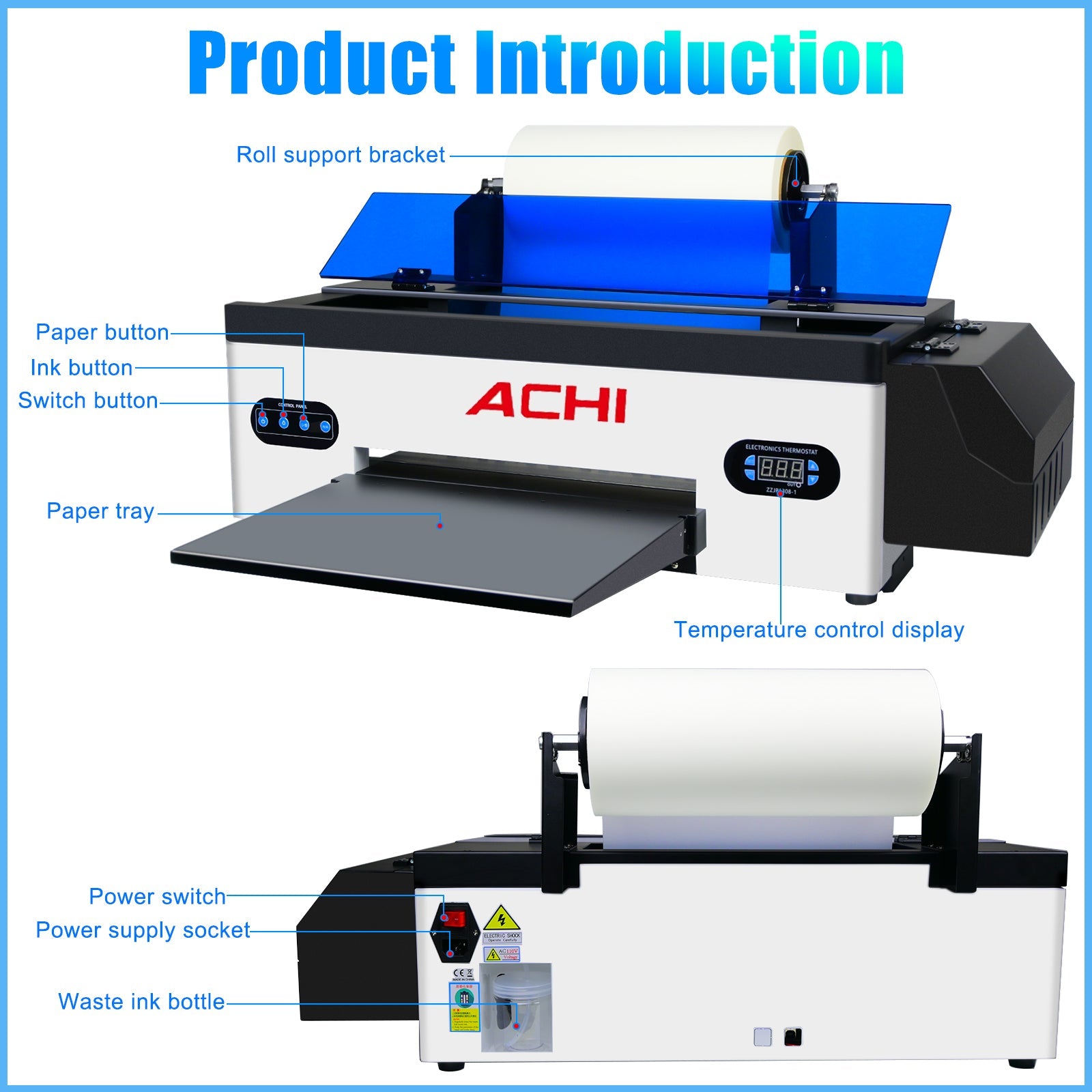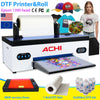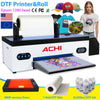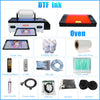Why Sublimation Ink Isn't Compatible with ACHI A3 Roll DTF Printers

Digital printing technology has revolutionized the customization industry, offering various methods like sublimation and direct-to-film (DTF) printing.
While both techniques deliver vibrant results, they are fundamentally different—especially when it comes to ink compatibility.
A common question we encounter is whether sublimation ink can be used in DTF printers like the ACHI A3 Roll DTF Printer.
The short answer is no, and here’s why.
The Core Difference: Ink Chemistry and Transfer Mechanism
Sublimation ink is designed to transition from a solid to a gaseous state under high heat, penetrating polyester-based materials permanently. This process requires specific temperature and pressure conditions and works best on synthetic fabrics or polymer-coated surfaces.
DTF ink, on the other hand, is formulated to be printed onto a special film, dried, and then transferred to various fabrics (including cotton, polyester, and blends) using a heat press. The key lies in the adhesive powder used in DTF printing, which binds the ink to the fabric. DTF ink is pigment-based and relies on this adhesive layer for durability and wash resistance.
Why Sublimation Ink Fails in DTF Printing
-
Adhesion Issues:
DTF printing requires ink that can combine with adhesive powder to form a flexible, durable layer on the fabric. Sublimation ink doesn’t interact with DTF adhesive powder. Instead of bonding, it repels or results in uneven, ineffective adhesion, leading to cracks, washes, or peeling. -
Curing and Drying Process:
Sublimation ink doesn’t “dry” in the same way DTF ink does. DTF ink is optimized for quick drying and compatibility with a hot melt powder. Sublimation ink remains wet longer and isn’t designed for powder application, causing clogging, smudging, and poor print quality. -
Clogging and Printer Damage:
Using sublimation ink in a DTF printer like the ACHI A3 can cause serious damage. The print heads and ink delivery systems in DTF printers are engineered for specific ink viscosity and pigment size. Sublimation ink can clog the printheads, leading to expensive repairs and reduced printer lifespan. -
Color and Performance Issues:
Even if temporary printing appears successful, sublimation ink won’t provide the same color vibrancy or wash fastness when used in a DTF process. The final result would be faded, non-durable designs that fail to meet quality standards.
ACHI A3 Roll DTF Printer: Designed for DTF Ink
The ACHI A3 is built to handle the entire DTF process—printing, powder application, drying, and heat transfer.
Its system is calibrated for DTF-specific ink, ensuring optimal performance, vibrant colors, and long-lasting prints.
Introducing sublimation ink disrupts this process, voiding warranties and compromising output.

-
Posted in
DTF printer




